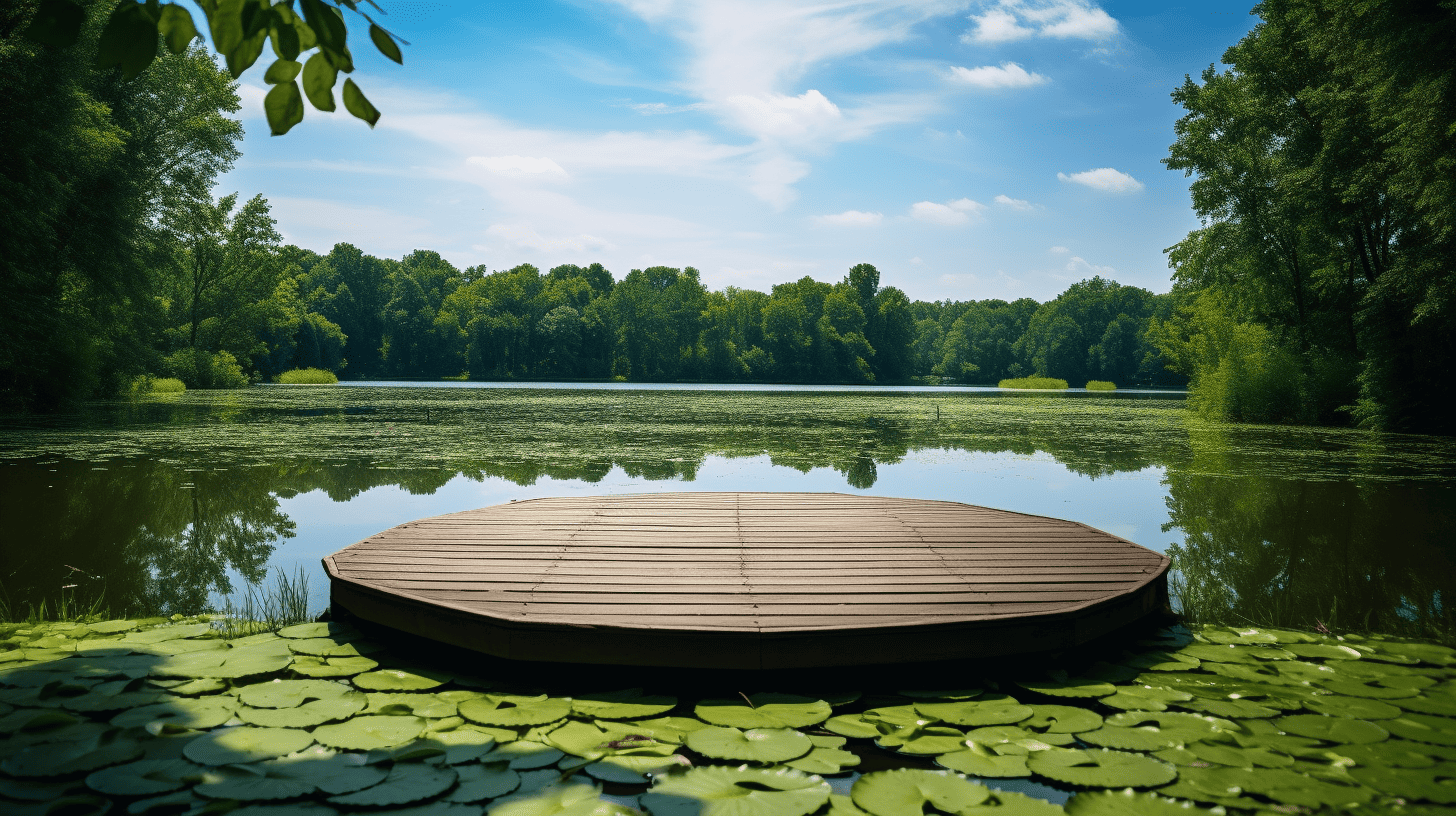As someone who has struggled with meditation, I know how frustrating it can be when you can’t seem to quiet your mind or focus during your practice. Meditation takes time and patience, so don’t get discouraged if you’re new to meditation or have trouble with it. Even experienced meditators have days where they can’t concentrate or calm their thoughts.
Let’s look at what to do when you can’t meditate.
Key Takeaways:
- It’s completely normal if you cannot meditate or quiet your mind some days. Don’t get discouraged.
- Trying to force meditation when you’re exceptionally restless often backfires. Instead, explore alternatives that bring mindful awareness.
- Walking, yoga, art-making, drumming, and nature time can induce relaxed, meditative states.
- Listen to guided imagery, chanting, or nature sounds if your mind is too distracted to meditate solo.
- Be patient with yourself and keep practicing mindfulness, even if traditional seated meditation is a struggle that day.
- Over time, regular mindfulness strengthens your ability to calm the mind and focus, whether seated or through everyday activities.
The good news is that there are many alternatives to seated meditation that can provide similar benefits for reducing stress, improving focus, and finding inner peace. Here are 21 things you can try when you’re feeling too restless or distracted to meditate:
Take a walk
One of the simplest meditation alternatives is taking a quiet walk, preferably somewhere peaceful, like a park or nature trail. Focus on your footsteps, your breath, and the sights and sounds around you. Walking gets you out of your head and into the present moment.
Do yoga
Gentle yoga helps unite the mind and body. The coordinated breathing and movements quiet mental chatter and bring awareness to the present. Even 10-15 minutes of yoga can relax and center you. For meditation-like yoga, stick to slower, more meditative poses and sequences.
Drink tea mindfully
Make a cup of hot tea, holding and smelling it first before taking the first sip. Savor the taste and warmth, focusing your full attention on the experience. Tea rituals induce tranquility and can be very meditative if you’re fully present.
Take a hot bath or shower
Let the warm water soothe tense muscles and racing thoughts. You can make it meditative by focusing on the sensual experience – the sound, temperature, and feel of the water on your skin. Light some candles to relax even more.
Get a massage
Treat yourself to a Swedish or aromatherapy massage. Let the massage therapist melt away muscle tension and quiet your mind. Meditation’s Many benefits can occur when we get massages as we tune into the present moment and de-stress.
Do breathwork
Focusing on the breath is at the core of many mindfulness practices. Deep belly breathing triggers relaxation and can help still the mind. Try counting each inhalation and exhalation, or repeat a mantra like “inhale calm, exhale tension.”
Listen to guided imagery/meditation
If your mind is too distracted to meditate alone, let someone guide you through visualization, meditation, or Progressive Muscle Relaxation. Close your eyes and fully engage your imagination as you follow their soothing voice.
Get moving
Going for a jog, dance session, or any heart-pumping workout you enjoy forces you into the present moment and relieves built-up mental stress. Exercising is meditative once you focus on your body and forget everything else.
Make art
Painting, drawing, knitting, sculpting, scrapbooking…any creative outlet absorbs your attention and quiets worrying thoughts. The state of “flow” artists experience is similar to meditation. Making art is grounding and relaxing.
Spend time in nature
Head to a calm park, beach, garden, or anywhere outdoors. When you notice sights, textures, sounds, and smells, nature has innate meditative qualities. Bring a journal to write down your observations.
Garden

Pull some weeds, plant flowers, or tend to vegetable beds in a meditative frame of mind. Feel the dirt, take in the scents, admire sprouting plants. Gardening keeps you present as you tune into your senses.
Try forest bathing
Also called “Shinrin Yoku,” forest bathing is the Japanese practice of mindfully immersing in nature by walking slowly through a forest. Studies show it boosts mood, reduces stress hormones, and enhances immune function.
Listen to nature sounds
If you can’t get outdoors, let nature come to you through recordings of rain, ocean waves, bird songs, or other calming nature noises. Sit and focus entirely on these soothing sounds from Mother Nature.
Try mala bead meditation
Running mala beads through your fingers is a form of meditation used for centuries across many traditions. Feel each bead as you silently repeat a mantra, fully present in the tactile experience.
Color or doodle
Buy an adult coloring book, pens, or markers in your favorite colors. The repetitive motion of coloring relaxes the mind, similar to meditation. You can also doodle patterns or designs for the same effect.
Bake or cook
Be fully engaged in kitchen projects like baking, cooking, chopping, or brewing tea. Tune into each sensory step – the sounds, smells, textures, sights, and tastes. Cooking with mindful attention is a meditative act.
Cuddle a pet
Snuggle your dog, cat, or other furry friend in your lap. Pet them slowly and feel the warm connection. Tune into their breathing, little movements, and the love between you. Animals can be calming meditation partners.
Write morning pages
“Morning pages” are three pages of stream-of-consciousness writing done first thing in the morning. The practice releases swirling thoughts onto paper so your mind feels clearer. Julia Cameron recommends it in The Artist’s Way.
Try drumming
Repetitive drumming, solo or in a group circle, produces meditative brainwave states similar to traditional meditation. It’s physically engaging and clears the mind. Check for drum circles in your area.
Listen to chanting
Chanting is used across spiritual traditions to transcend everyday consciousness. Try meditating to record Gregorian chants, kirtan, or other hypnotic chanting. The repetition and vibration can lull racing thoughts.
Do a body scan
Lie down and systematically scan each area of your body from head to toe, focusing on any tension or sensations. Body scans ground you in the moment to create meditative awareness. Many apps and YouTube videos guide you through the practice.
Cloud gaze

Lay on your back and watch the sky, gazing at the clouds rolling and morphing into different shapes. Cloudwatching gets you out of constant thinking by letting nature capture your full attention. Set a timer so you don’t fall asleep!
TIP: Anytime you bring mindful awareness and focus to an activity in the present moment, it can become a “meditation,” even if it looks different from traditional seated practice. Don’t compare yourself to others; find alternatives that work for you! Meditation is about calming and awakening the mind, however, you choose to get there.
The inability to meditate or “quiet the mind” is widespread, but that doesn’t mean you can’t experience the powerful benefits of meditation through other practices. When traditional seated meditation fails, give yourself permission to try something new, and don’t judge yourself.
Above all, be patient and keep practicing mindfulness however works best for you. Over time, regular mindfulness strengthens your “meditation muscle,” so concentration becomes easier. Meanwhile, explore creative alternatives that get you into a relaxed, present state. Our minds and lives are transformed simply by showing up and paying attention, even if – or especially when – meditation feels out of reach.
Conclusion on What to Do When You Can’t Meditate
Regular meditation provides incredible benefits, from stress reduction to improved focus and inner peace. However, almost everyone struggles to meditate when they feel too restless, distracted, or overwhelmed. The inability to meditate or “clear your mind” is normal and does not mean something is wrong with you or that you’re a bad meditator.
The most important thing is that you don’t give up! Keep trying different mindfulness practices and be patient with yourself. If traditional seated meditation isn’t working that day, shift to walking, yoga, coloring, or any activity done mindfully. Bringing awareness to the present can calm anxiety, deepen focus, and heighten contentment.
Keep experimenting until you find alternatives that give you the same grounded, clear feeling as meditation. Over time, regular mindfulness will strengthen your ability to tap into a meditative state through any practice. When we stop judging and drop into the present, beautiful transformations occur.
FAQ on Meditation and Mindfulness
Q: What are the benefits of meditation, and why would someone want an alternative?
A: Meditation practice has numerous benefits. It can help calm your mind, manage anxiety and depression, and improve focus. However, people might seek alternatives because they feel like they can’t meditate. Common reasons behind this include struggling to sit still, a racing mind, or simply finding it hard to focus on their breath. They may be looking for easier ways to achieve similar outcomes while adjusting the process to fit their needs.
Q: Why do people think they can’t meditate?
A: Many people think they can’t meditate due to common misconceptions about what meditation really is. They may wrongly assume that they must fully clear their mind or sit in a specific posture, which might not be suitable for everyone. It could also be that their mind is racing or wandering continuously, giving them a feeling that they aren’t able to meditate properly.
Q: Are there any benefits to seeking an alternative to meditation?
A: Yes. Seeking an alternative to common meditation methods may help someone who is unable to meditate in conventional ways. It can offer them a way to still harness the benefits of mindfulness or transcendental meditation with a method that suits their lifestyle or cognitive preferences better. They may find it easier to practice regularly, which is crucial to enjoy the benefits.
Q: Can mindfulness be considered an alternative to common meditation?
A: Yes, mindfulness can be a wonderful alternative to common meditation techniques. Mindfulness meditation emphasizes being aware and present in the moment which can be practiced at any time and in any place, even when you’re doing your to-do list. This can make it a more accessible practice for people who struggle to find the time to meditate or find it hard to focus in a traditional meditation practice.
Q: What about walking meditation as an alternative to common meditation?
A: Walking meditation can be a great alternative for those who struggle to sit still during traditional meditation. It involves focusing your mind on the act of walking, the feeling of your foot touching the ground, the sounds around you, and your breath. This helps cultivate mindfulness and tranquility even when not sitting quietly in a meditation space.
Q: Is guided meditation a good alternative for those whose mind is always racing during silent meditation?
A: Yes, guided meditation is an excellent alternative for those who struggle with a racing mind during silent meditation. Guided meditations, often available on apps like Headspace, offer structured guidance that can help you focus and prevent your mind from wandering. The guidance can also give specific tips on what to do when your mind starts to race during the meditation practice.
Q: Do the benefits of alternatives to meditation compare to the benefits of traditional meditation?
A: While traditional meditation and its alternatives can differ in their approach, they often aim to achieve similar outcomes. Alternatives like mindfulness or walking meditation, among others, can reduce anxiety, improve focus, and nurture a sense of peace, just as traditional meditation can. In fact, some individuals might find they benefit more from alternatives, especially if they align better with their lifestyle or cognitive preferences.
Q: Are meditation hacks effective even if you’re still struggling with standard meditation practices?
A: Yes. Meditation hacks are designed to help people who struggle with standard meditation practices actually meditate more effectively. They can provide tips and tricks to make the practice of meditation simpler, enjoyable, and more aligned with one’s personal needs and capabilities. So even if you’re still struggling with standard practices, these hacks can be highly beneficial.
Q: Can meditation alternatives help calm anxiety and depression?
A: Yes, like traditional meditation, alternatives to meditation can also help alleviate symptoms of anxiety and depression. Practices like mindfulness, walking meditation, or guided meditation focus on calming the mind, relaxing the body, and fostering positive mental habits. It’s important to note that while meditation can help manage symptoms, it’s not a substitute for professional medical advice and therapy.
Q: What if even after trying alternatives, I still feel like I can’t meditate?
A: It’s completely normal to feel this way, especially when you’re trying something new. Remember, meditation isn’t about silencing your mind completely, but about learning to observe your thoughts without judgement. Feel free to explore different alternatives and find one that truly suits you. It’s also beneficial to approach this journey with patience and self-compassion. Consultation with a meditation teacher or mental health professional can also be very helpful.





Leave a Reply